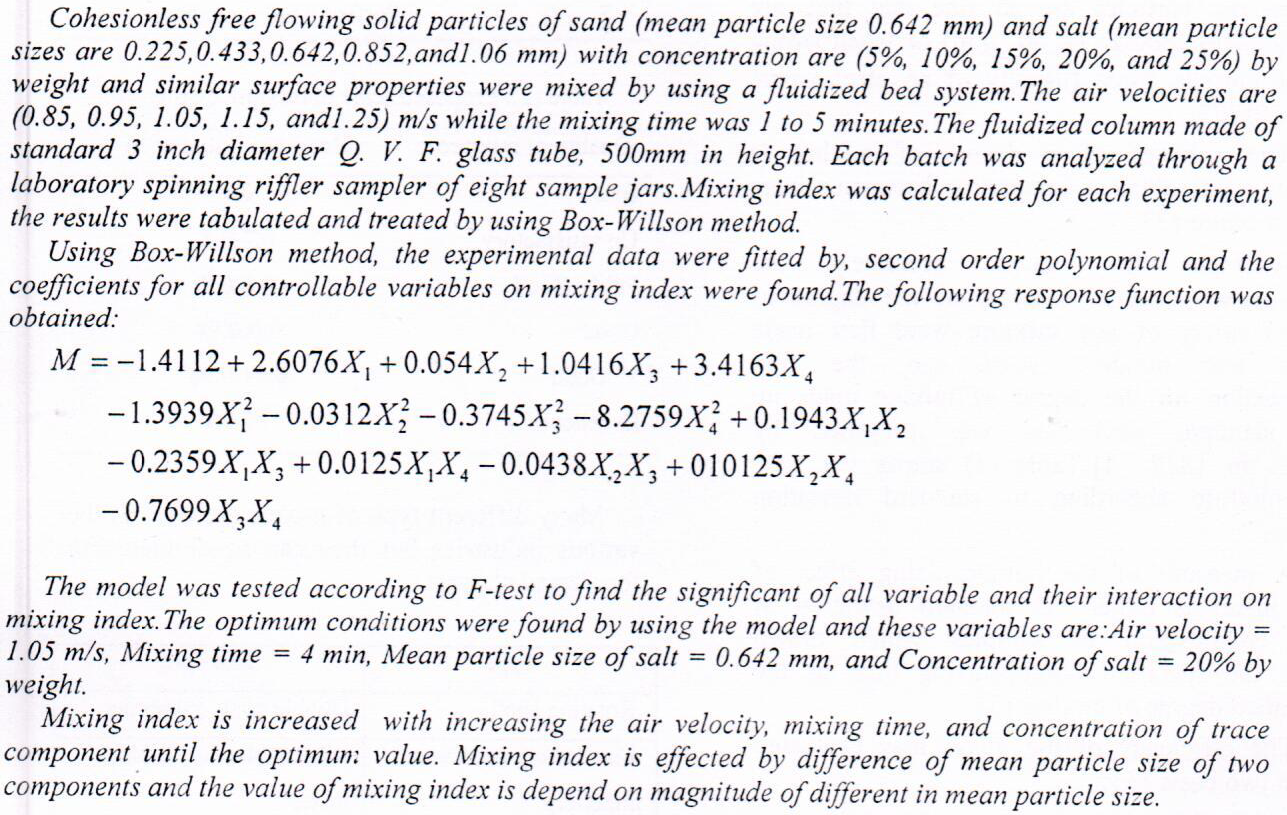
 (5)
(5)
 (1)
(1)
A batch and flow injection (FI) spectrophotometric methods are described for the determination of barbituric acid in aqueous and urine samples. The method is based on the oxidative coupling reaction of barbituric acid with 4-aminoantipyrine and potassium iodate to form purple water soluble stable product at λ 510 nm. Good linearity for both methods was obtained ranging from 2 to 60 μg mL−1, 5–100 μg mL−1 for batch and FI techniques, respectively. The limit of detection (signal/noise = 3) of 0.45 μg mL−1 for batch method and 0.48 μg mL−1 for FI analysis was obtained. The proposed methods were applied successfully for the determination of barbituric acid in tap water, river water, and urine samples with good recoveries of 99.92
... Show More (13)
(13)
 (5)
(5)
 (3)
(3)
 (2)
(2)
 (8)
(8)
 (4)
(4)
Background: Blood group system and the ability to taste phenylthiocarbamide (PTC) are the most studied traits in human genetics which have been extensively used in describing genetic variations among human populations around the world that may had an effect on dental caries. The aims of present study were to investigate the caries experience among students with different bitter taste threshold in relation to blood type. Materials and Methods: The sample of present study includes dental students female aged19-21 years. The diagnosis of dental caries was done according to the criteria of Manjia et al, 1989 recording decayed lesion by severity (D1-4) MFS. Furthermore, bitter taste sensitivity was measured according to PTC (phenylthiocarbamid
... Show More (1)
(1)
Combining different treatment strategies successively or simultaneously has become recommended to achieve high purification standards for the treated discharged water. The current work focused on combining electrocoagulation, ion-exchange, and ultrasonication treatment approaches for the simultaneous removal of copper, nickel, and zinc ions from water. The removal of the three studied ions was significantly enhanced by increasing the power density (4–10 mA/cm2) and NaCl salt concentration (0.5–1.5 g/L) at a natural solution pH. The simultaneous removal of these metal ions at 4 mA/cm2 and 1 g NaCl/L was highly improved by introducing 1 g/L of mordenite zeolite as an ion-exchanger. A remarkable removal of heavy metals was reported
... Show More (1)
(1)
 (1)
(1)
 (9)
(9)
 (9)
(9)
 (4)
(4)
 (2)
(2)
 (2)
(2)
 (2)
(2)
Background Fibroblast growth factor receptor 2 (FGFR2) and trinucleotide repeat-containing 9 (TNRC9) gene polymorphisms have been associated with some cancers. We aimed to assess the association of FGFR2 rs2981582 and TNRC9 rs12443621 polymorphisms with hepatocellular cancer risk. Methods One hundred patients with HCV-induced HCC, 100 patients with chronic HCV infection, and 100 controls were genotyped for FGFR2 rs2981582 and TNRC9 rs12443621 using allele-specific Real-Time PCR analysis. Results FGFR2 rs2981582 genotype TT was associated with increased risk of HCC when compared to controls (OR = 3.09, 95% CI = 1.24–7.68). However, it was significantly associated with a lower risk of HCC when using HCV patients as controls (OR =
... Show More (4)
(4)
